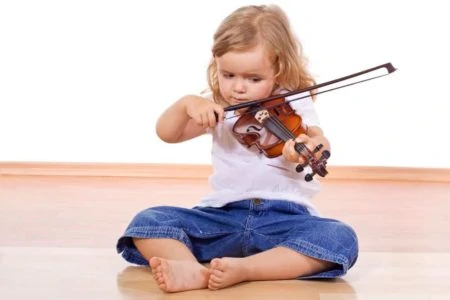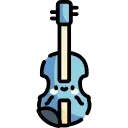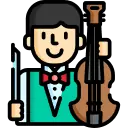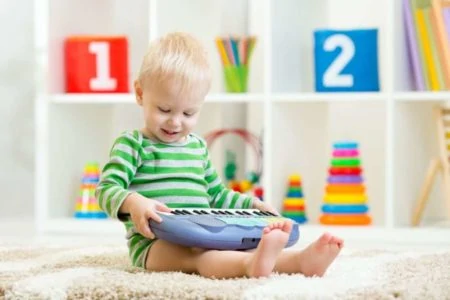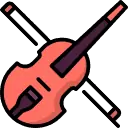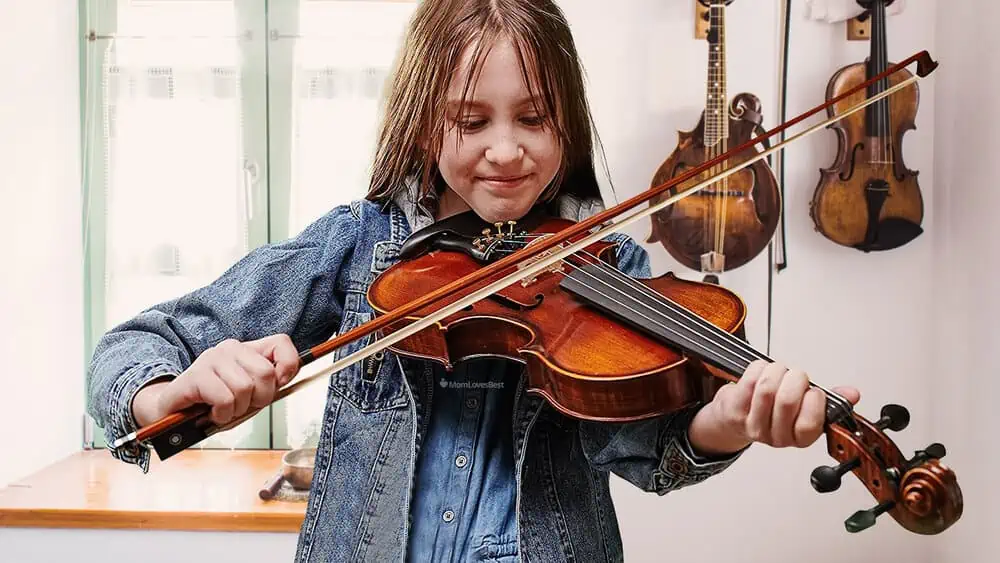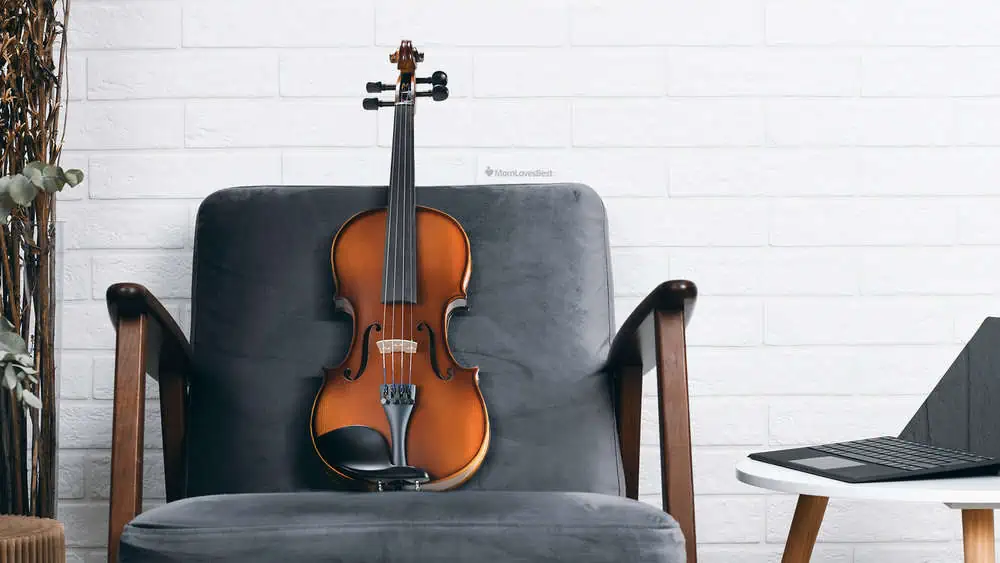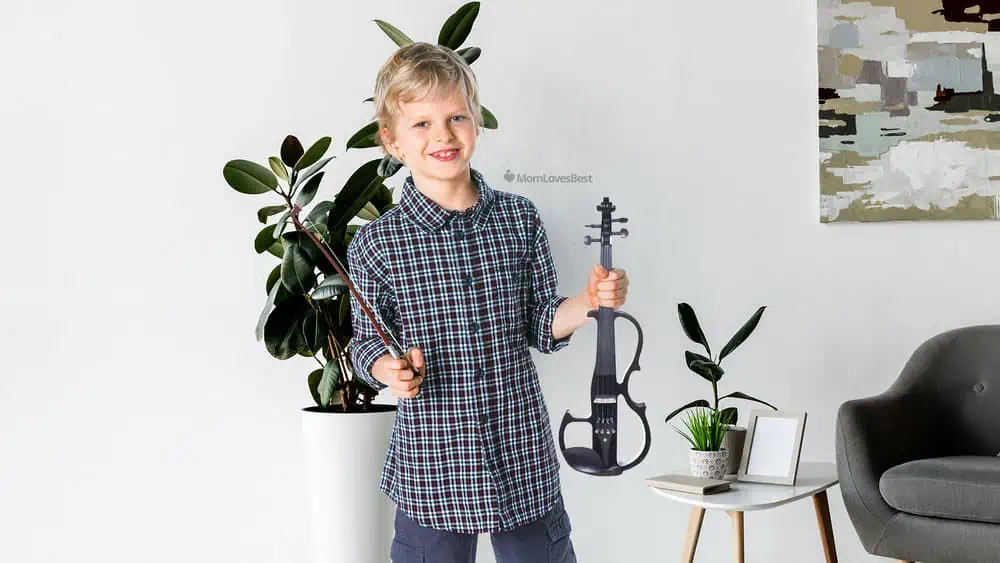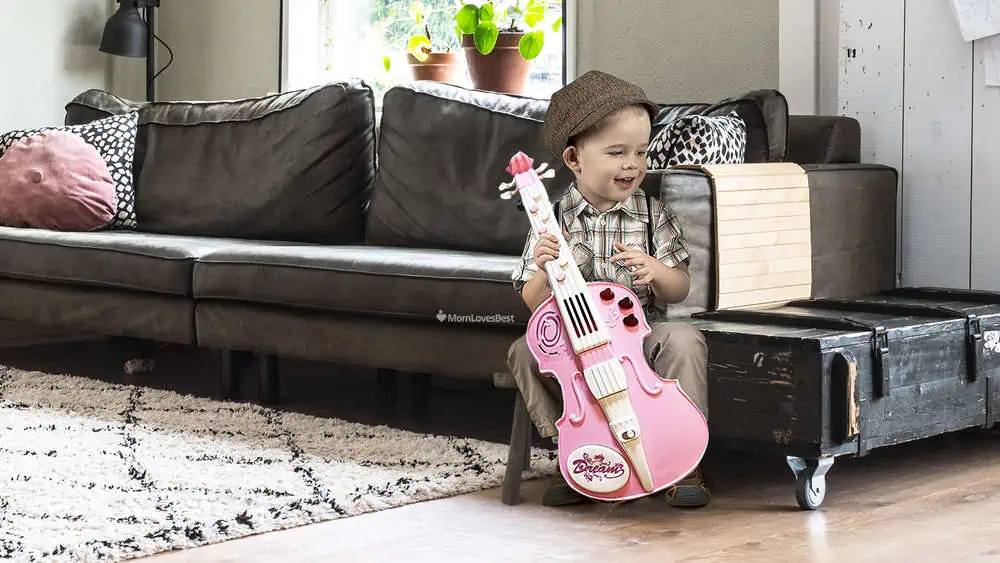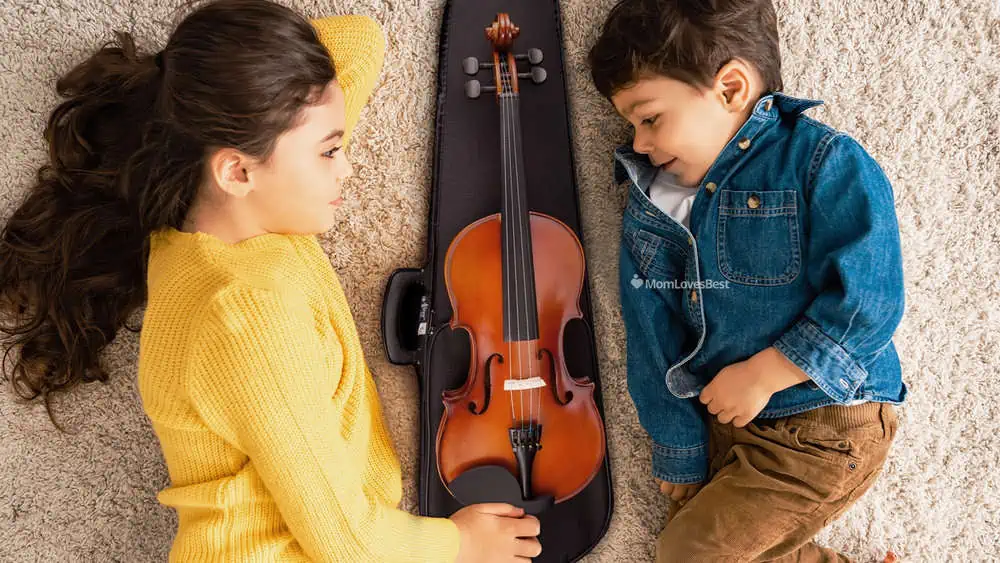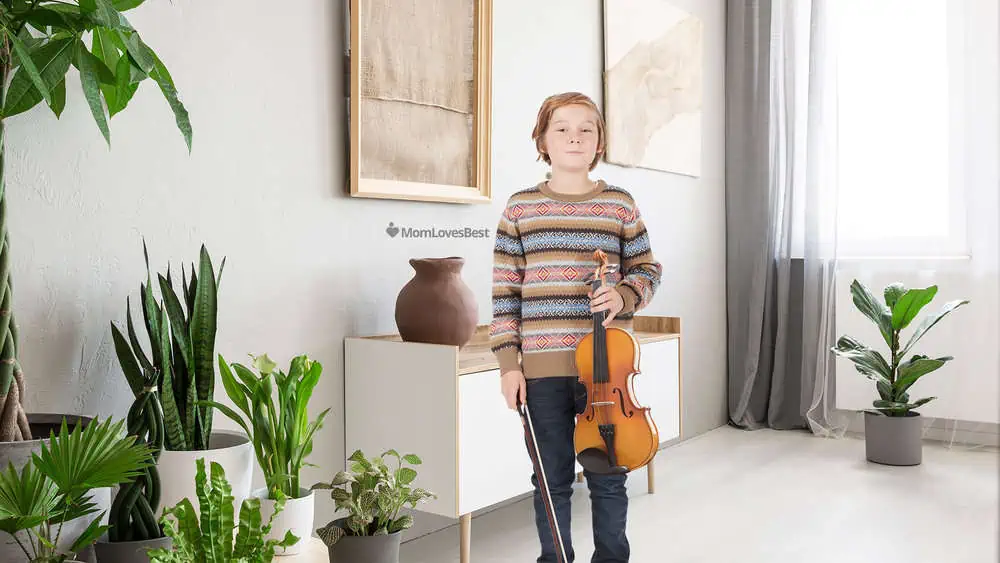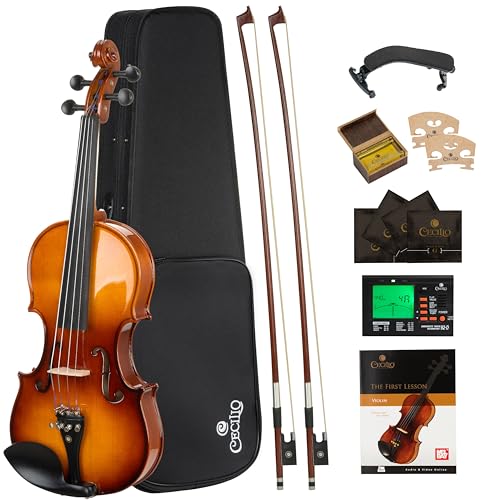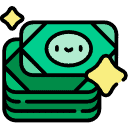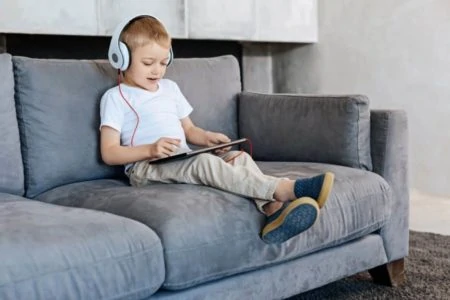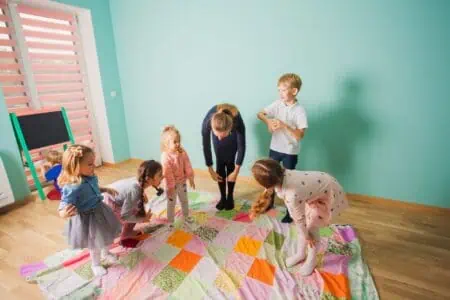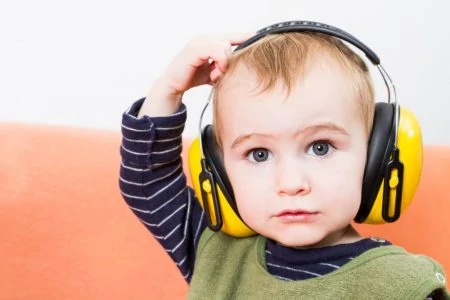You’ve made the brave call to get your child a violin. Congrats!
If you can survive those early days of screeching and howling, your home might eventually fill with beautiful, calming music. But that only happens if you start with a quality instrument.
That is where we come in. We did the heavy lifting to help you find the best kids’ violins on the market.
We will answer your burning questions about starting this instrument and review the top choices to help your budding musician succeed.
- Classic look
- High-quality wood and materials
- Nickel-plated fine tuners
- Features notes and songs
- Comes in two shades
- Durable material
- Fully wooden construction
- High-quality and beautiful sound
- Complete kit and accessories
- Quality materials
- Comes with essentials & extras
- High-quality bow
- Convenient case included
- Made with durable materials
- Built-in fine tuners
- Unique design
- Strong battery
- Headphone jack for quieter practice sessions
How To Choose a Violin for Kids
Product Reviews
We reviewed the market to find the best options for every age and stage. Here are our top nine picks.
Mendini 1/2 MV500 Solid Wood Violin
Best Craftsmanship
The Mendini MV500 is a fantastic step up from basic “violin-shaped objects” you often find online. It is a 1/2 size acoustic violin, perfect for the intermediate beginner who has outgrown their first instrument or wants to start with higher quality. It features a solid spruce top and maple back, which gives it a warm, resonant tone.
What makes this a great choice for parents is the complete outfit. It comes with a hard case, a shoulder rest (a huge plus), rosin, two bridges, and an extra set of strings. The tailpiece has four fine tuners, which makes tuning much easier for kids than using the main pegs.
The varnish is an antique style, giving it a classic, professional look that kids love. It also includes two bows, which is helpful because beginners often break or wear out their first bow quickly.
Pros
- Comes with two brazilwood bows.
- Includes a shoulder rest, saving you an extra purchase.
- Warm sound due to solid wood construction.
Cons
- The factory strings are okay, but replacing them upgrades the sound instantly.
Our Ratings
Kennedy Violins Pupil Violin
Best Complete Set
If you are worried about receiving a broken or unplayable instrument from the internet, Kennedy Violins is a safe bet. They are known for their quality control. These violins are assembled in Washington state by professional luthiers (violin makers) who set up the bridge and strings before shipping.
The Pupil Violin features real carved maple and spruce, not pressed wood. It avoids the thick, shiny lacquer found on cheap violins, opting for a satin finish that lets the wood vibrate more freely.
It comes as a full kit with a Portland case, a brazilwood bow with real horsehair, and D’Addario Prelude strings (which are excellent student strings). The setup includes a pre-rosined bow, so your child can play the moment they open the box.
Pros
- Professional setup in the USA ensures playability out of the box.
- Includes high-quality D’Addario strings.
- Real ebony fittings rather than painted plastic.
Cons
- More expensive than standard mass-produced starter kits.
Our Ratings
Cecilio with Ebony Fittings Electric Violin
Most Attractive
Is your child interested in rock, jazz, or just looking cool? This Cecilio Electric Violin features a skeletal frame design that looks amazing on stage. Because it is electric, the body is solid maple, making it quite durable compared to delicate hollow acoustic violins.
The biggest selling point for parents is the headphone jack. Your child can practice silently in the living room while hearing themselves through headphones. This is a lifesaver during those early learning stages.
It connects to an amplifier (like a guitar amp) for performances. The kit includes a hard case, bow, rosin, headphones, and an AUX cable. Note that it requires a 9V battery to operate the active pickup system.
Pros
- Silent practice option via headphones.
- Unique, eye-catching design.
- Can plug into amps for loud performances.
Cons
- Heavier than acoustic violins, which can tire out small arms.
- Does not sound like a traditional violin; it has a more synthesized tone.
Our Ratings
LilPals Amazing Child Prodigy Violin Toy
Best for Fun Play
If your toddler is begging for a violin but isn’t ready for a fragile wooden instrument, the LilPals toy is the answer. This is strictly a toy, available in fun pink or blue colors, designed to introduce the idea of violin playing without the frustration.
It operates electronically. Your child runs the “bow” across a sensor pad on the violin, which triggers pre-recorded notes and melodies. This mimics the motion of bowing without requiring any actual skill.
It is durable enough to survive a playroom environment. While it won’t teach musical theory, it helps with hand-eye coordination and builds excitement for eventually learning the real thing.
Pros
- Fun lights and pre-recorded melodies.
- Durable plastic construction.
- Teaches the basic motion of bowing.
Cons
- It is a toy, not an instrument; you cannot play real notes on it.
Our Ratings
ADM Acoustic Violin Set
Most Realistic Toy Violin
The ADM Acoustic Violin is a solid entry-level choice for older kids transitioning to a full-size (4/4) instrument. It features a spruce top and maple sides with an antique varnish that gives it a sophisticated look suitable for school orchestras.
It is designed to be a functional student instrument with an alloy tailpiece and four integrated fine tuners. This is crucial for beginners, as tuning with pegs alone can be difficult and frustrating.
The bundle is comprehensive, including a case, bow, rosin, shoulder rest, and even an electronic tuner. The tuner clips onto the headstock and helps the student visualize if they are in tune, fostering independence during practice.
Pros
- Full-size instrument suitable for ages 11+.
- Includes a clip-on digital tuner.
- Four fine tuners for easy adjustments.
Cons
- Some cosmetic imperfections are common at this price point.
- Not available in left-handed configurations (though most lefties play standard violins).
Our Ratings
Vangoa 1/4 Violin
Easy to Play
The Vangoa series is aimed at budget-conscious parents who still want a playable wooden instrument. This 1/4 size violin is ideal for children aged 5 to 7. It is built from spruce and maple, providing a surprisingly bright sound for its size.
One nice feature is the varnish. It is thin and smooth, not thick and gummy like some cheap violins, allowing for better resonance. The neck is comfortable for small hands, and the ebony fittings are smooth to the touch.
The kit is generous: you get a light hard case, a brazilwood bow, rosin, a shoulder rest, extra strings, and a clip-on tuner. It even comes with a pickup system you can attach if you ever want to plug it into an amp, making it a hybrid acoustic-electric option.
Pros
- Includes a pickup for optional amplification.
- Great value for the number of accessories included.
- Smooth varnish feels nice to hold.
Cons
- The included rosin is often dry; you might need to buy a better cake separately.
Our Ratings
Kennedy Violins Louis Carpini
Best for Sound Quality
If you are looking for a violin that will last your child through years of serious study, the Louis Carpini G2 by Kennedy Violins is a top-tier choice. Unlike standard student models, this uses higher-grade maple and spruce, resulting in a complex, rich tone with excellent projection.
Like other Kennedy instruments, this is set up in the USA. The bridge is hand-carved to fit the violin perfectly, and the pegs are fitted smoothly so they don’t slip. It comes strung with D’Addario Prelude strings.
The accessories match the quality of the instrument. You get a Kaplan rosin cake (much better than generic), a high-quality Giuliani brazilwood bow, and a rectangular case with plenty of storage for sheet music and accessories.
Pros
- Superior sound quality suitable for advanced students.
- High-end accessories included (rosin, bow, case).
- Excellent USA-based setup and quality control.
Cons
- Significantly more expensive than beginner kits.
Our Ratings
Cecilio CVN-300 Solid Wood Violin
Best Traditional Style
The Cecilio CVN-300 is a workhorse student violin. It bridges the gap between the very cheapest beginners’ instruments and the more expensive intermediate models. It features inlaid purfling (the decorative line around the edge), which actually helps prevent cracks from spreading, rather than just being painted on.
It has an antique varnish that isn’t too shiny, giving it a respectable classroom look. The fingerboard is ebony, which is durable and won’t wear down quickly under the strings.
The outfit includes two bows, a chromatic tuner, a shoulder rest, and a cake of rosin. The sound is generally described as warm and mellow, which is pleasant for a student instrument that can sometimes sound shrill.
Pros
- Inlaid purfling adds durability.
- Ebony fittings offer better longevity.
- Comes with two bows (always good to have a spare).
Cons
- The bridge may need adjustment by a professional for optimal playability.
Our Ratings
Eastar EVA-2 4/4 Violin Set
Best for Learning
The hardest part of learning violin is knowing where to put your fingers. There are no frets like on a guitar! The Eastar EVA-2 solves this by embedding finger guides directly onto the fingerboard.
These “Muscovite” points are visual markers that help students find the correct notes instantly. This speeds up muscle memory and helps kids play in tune faster than guessing on a blank fingerboard.
Aside from the learning aids, it is a standard beginner violin made of spruce and maple. The kit is complete with a shoulder rest, strings, rosin, and a tuner. It is an excellent choice for self-taught students or parents who want to help their kids practice at home.
Pros
- Visual finger guides help beginners play in tune.
- Complete starter kit with everything included.
- Affordable price point for new learners.
Cons
- Tuning pegs can be slippery and may need peg compound (or chalk) to hold tight.
- The bow quality is basic.
